ETHx Rewards Withdrawal | Tech Explainer
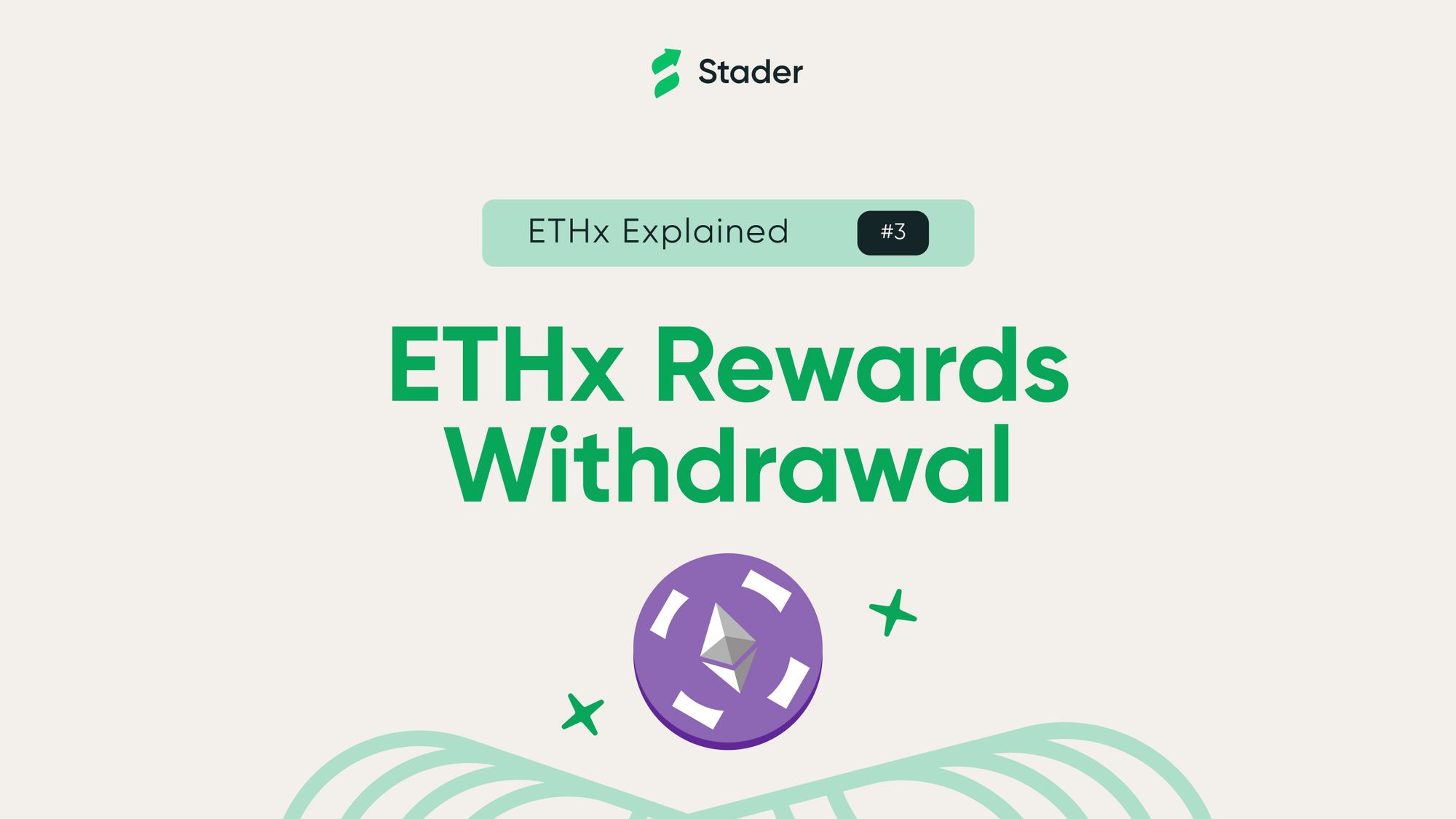
About Stader
Stader is a multi-chain, non-custodial liquid staking protocol on six chains, including Polygon, Fantom, BNB, NEAR, Hedera, and Terra 2.0. With over $120 Mn in TVL across chains, Stader is trusted by 70K+ wallets and a community of 150K+ members.
Stader's mission is to unlock a passive income opportunity for 1Bn+ people through staking and DeFi. We aim to achieve this by simplifying staking & offering the best yield opportunities with our liquid staking solution across multiple blockchains.
ETHx (following Stader’s convention of an x-for-suffix for liquid tokens) is the liquid staking token for staked Ethereum offered by Stader. ETHx aims to provide Stakers with a decentralized and scalable solution with diverse DeFi integrations.
This blog series aims to give the reader a deeper understanding of the inner workings of ETHx, covering the architecture through a series of posts outlined below:
- Node Operator onboarding
- Deposit workflow
- Rewards management
- Oracle updates
- ETH withdrawals
- Security
This post explores design considerations related to staker and node operator rewards management with ETHx. Rewards for staking Ethereum come in two flavors. The first is the rewards accrued on the consensus layer, consisting of rewards for block attestations and proposals. The second is MEV rewards and priority fees (distributed to a fee recipient set by the operator).

Let us get into detail in the following sections on the nuances in processing and accounting for these rewards in ETHx.
1. Consensus Layer Rewards
Every staked validator begins with 32 ETH, at which point they are registered and marked as active. A validator is expected to perform validation duties beyond this point to be eligible for rewards. Any rewards gained through block attestations or block proposals show up as an increase of balance on the validator’s pubkey address on the beacon chain. However, any balance of more than 32 ETH for a pubkey is periodically transferred to the validator’s withdrawal credential by the Ethereum chain. At Stader, this withdrawal credential is a non-custodial smart contract called a ‘ValidatorWithdrawalVault’. Each validator has an associated validatorWithdrawalVault. Each vault has a permissionless function to split the accrued rewards between Stakers, Node Operators, and Stader DAO treasury.
It is important to note that every permissionless validator provides 4 ETH security collateral in the total 32 ETH balance on the beacon chain. Hence any accrued rewards are first distributed into 1/8th and 7/8th portions, with the former fully allocated to node operator rewards. Node operators and Stader DAO earn a commission from the reward amount of the latter. The rest is rewards owed to Stakers, moved to ‘StaderStakePoolsManager’, and eventually staked with newer validators. A permissioned pool validator does not provide a security collateral. Hence, the entire rewards accrued are considered for splitting according to the commission structure between Node Operators, Stader DAO Treasury, and Stakers.
Effectively, Node Operators or Stakers can distribute the consensus layer rewards to different stakeholders in an open and permissionless manner. This mechanism remains the same for all validators across permissionless and permissioned pools. Further, to save node operators gas costs spent on claiming the rewards from individual validator vaults, Stader periodically pools operator reward share into a main contract address from which node operators can claim funds in a single transaction.

2. Execution Layer Rewards
Successful operation of validators also fetches operators rewards from MEV and priority fees. MEV (maximal extractable value) refers to the operator’s capability to include, exclude, and reorder transactions in a block to directly or indirectly profit. MEV is contentious as a concept but plays an essential role in ensuring capital efficiency. Most current operators on the Ethereum network participate in MEV. At Stader, MEV is mandated for all node operators. A priority fee is what a transaction sender would pay a block producer for the transaction to be included in a block.
These two rewards are compensation for node operators performing their validator duties. However, these rewards are only applicable to the block producer. With the ever-growing number of validators in the ETH ecosystem, the chances of producing a block decrease by the day. Stader turns these unpredictable rewards into consistent and predictable rewards flow with the help of a socializing pool. A socializing pool is a shared address to which rewards from multiple validators are received. Periodically, all operators subscribed to this socializing pool can claim their share based on the number of validators they operate, their performance, etc. Alternatively, node operators can choose not to subscribe to socializing pool and continue to rely on the sporadic execution layer rewards directly received to their ‘NodeElRewardVault’.
In either case, a node operator is eligible to receive their share of the execution layer rewards, and the logic for distribution follows similarly to the consensus layer rewards. For staking 4 out of the 32 ETH, permissionless node operators are directly eligible for 1/8th of the execution layer rewards. Further, they stand to gain a commission on the 28 ETH staked with their validators. Permissioned node operators are eligible for a % commission on the 32 ETH staked with their validators
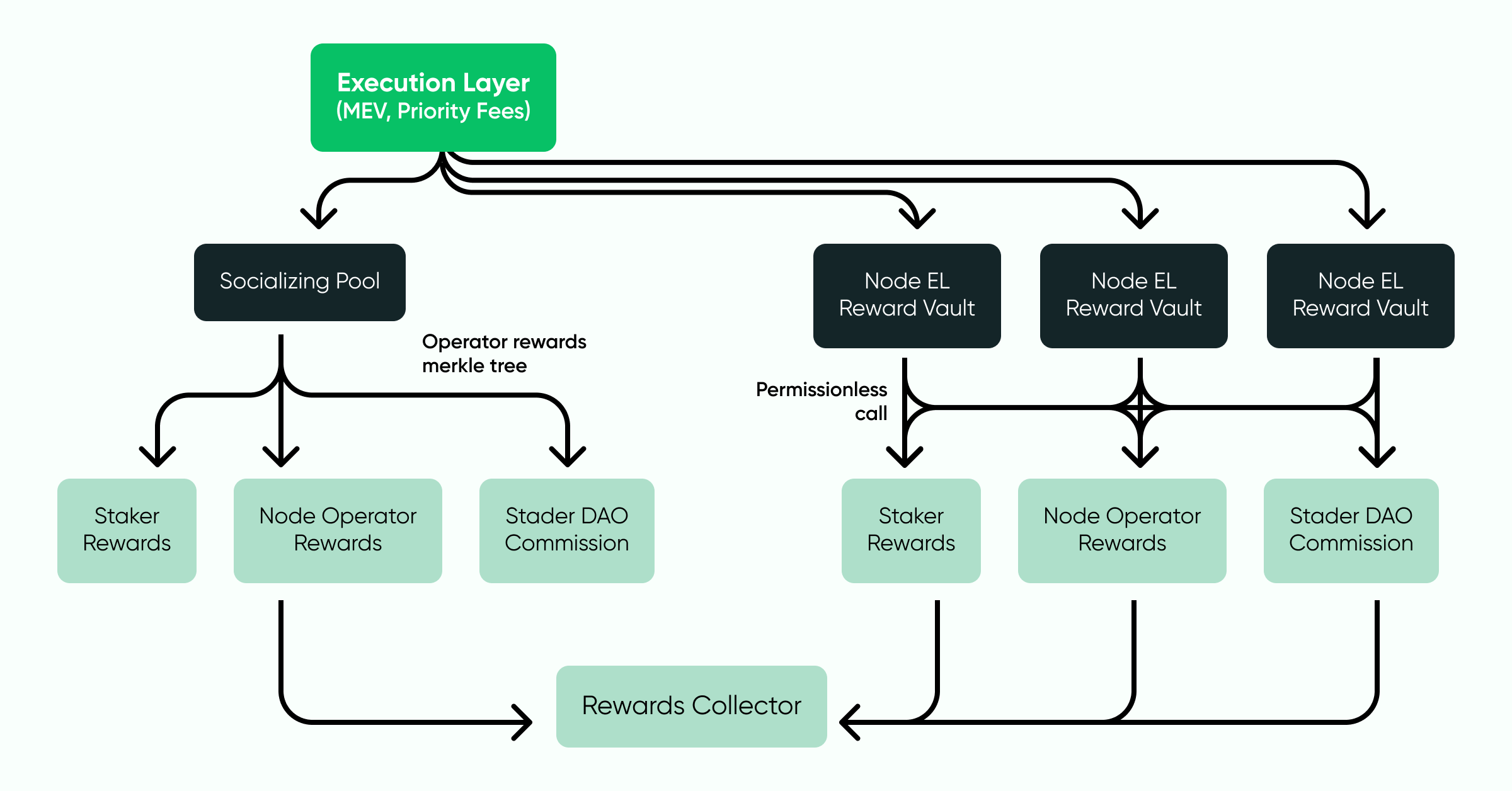
3. SD Token Rewards
Every node operator deposits 4 ETH as security collateral for each of their validators for ETHx. This provides excellent economic security for Stakers by protecting their staked ETH as a senior tranche. Node Operators take on the risk of losing their ETH collateral for any performance-related penalties acting as a junior tranche. Moreover, node operators have also provided at least 0.4 ETH worth of SD tokens per validator as secondary security collateral. This aligns the node operator to the Stader protocol and ETHx while making them key stakeholders in the Stader DAO. To compensate the node operators for their service, Stader provides SD rewards proportional to the SD committed as a security bond per validator. The greater the SD staked, the greater the alignment with Stader DAO and, consequently, more the SD rewards. To prevent large SD holders from unfairly gaming this system, Stader only considers 8 ETH worth of SD per validator as secondary collateral. So, the only way to get more SD rewards is to run more validators, thereby adding additional value to the ETHx ecosystem.
Stader distributes these SD rewards through a Merkle tree mechanism similar to ETH rewards from socializing pool. Stader has committed to 1-2M SD tokens (~$1-2M at current prices) as rewards for the first year of node operations, making earning rewards by running ETHx nodes attractive.
Claiming Rewards
Stader makes it easy to claim rewards through the Stader Node CLI.
1.Claim Execution Layer rewards when not opted into socializing pool - An operator (or any entity) can settle rewards from any operator/validator-owned vaults in a permissionless manner. Node operators can claim the distributed rewards directly by interacting with the OperatorRewardsCollector contract.
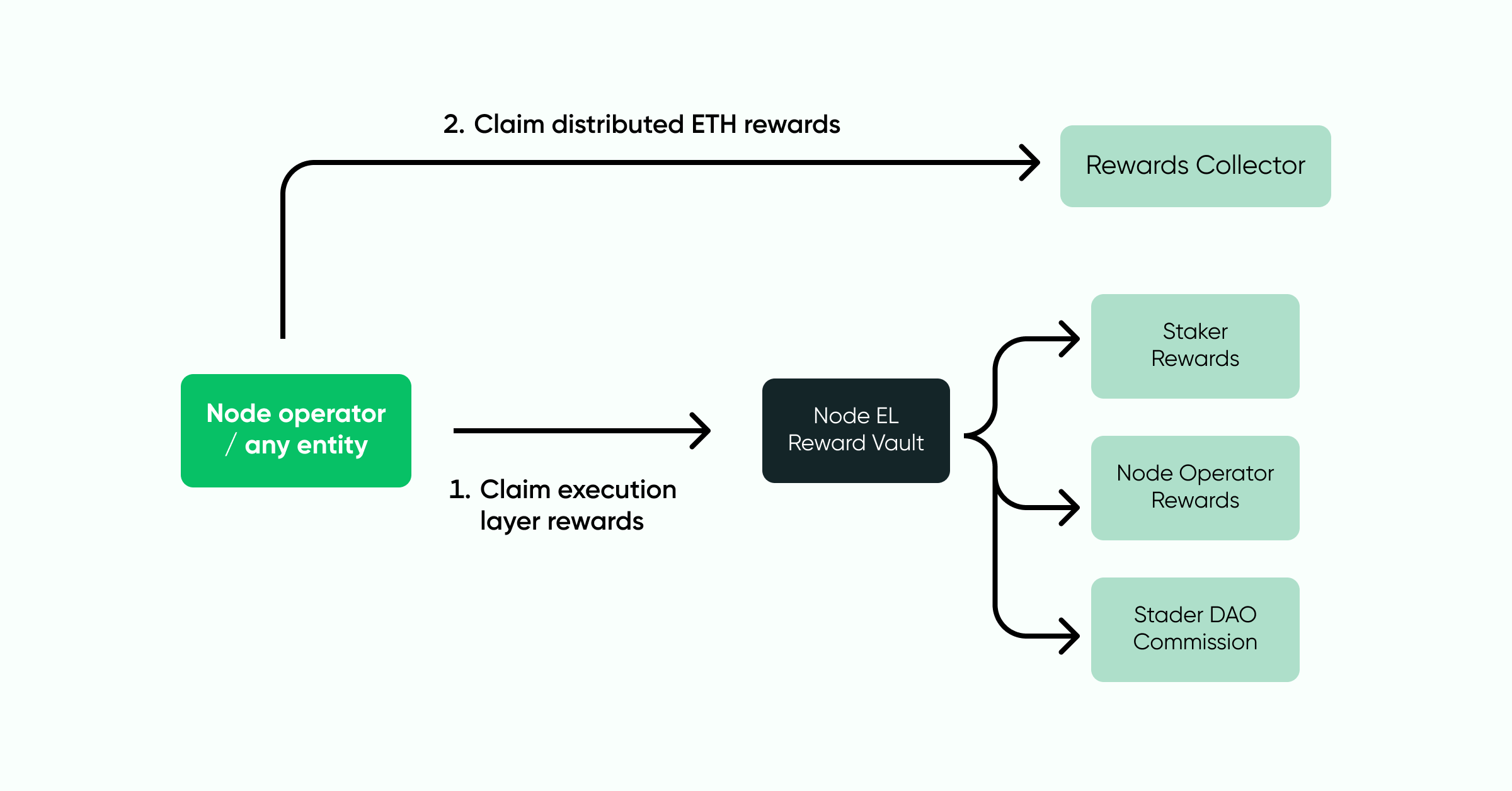
2.Claim Execution layer ETH rewards when opted into socializing pool - After a Merkle root is posted, a node operator can simply claim the socializing pool ETH rewards for that cycle by interacting with the socializing pool contract.
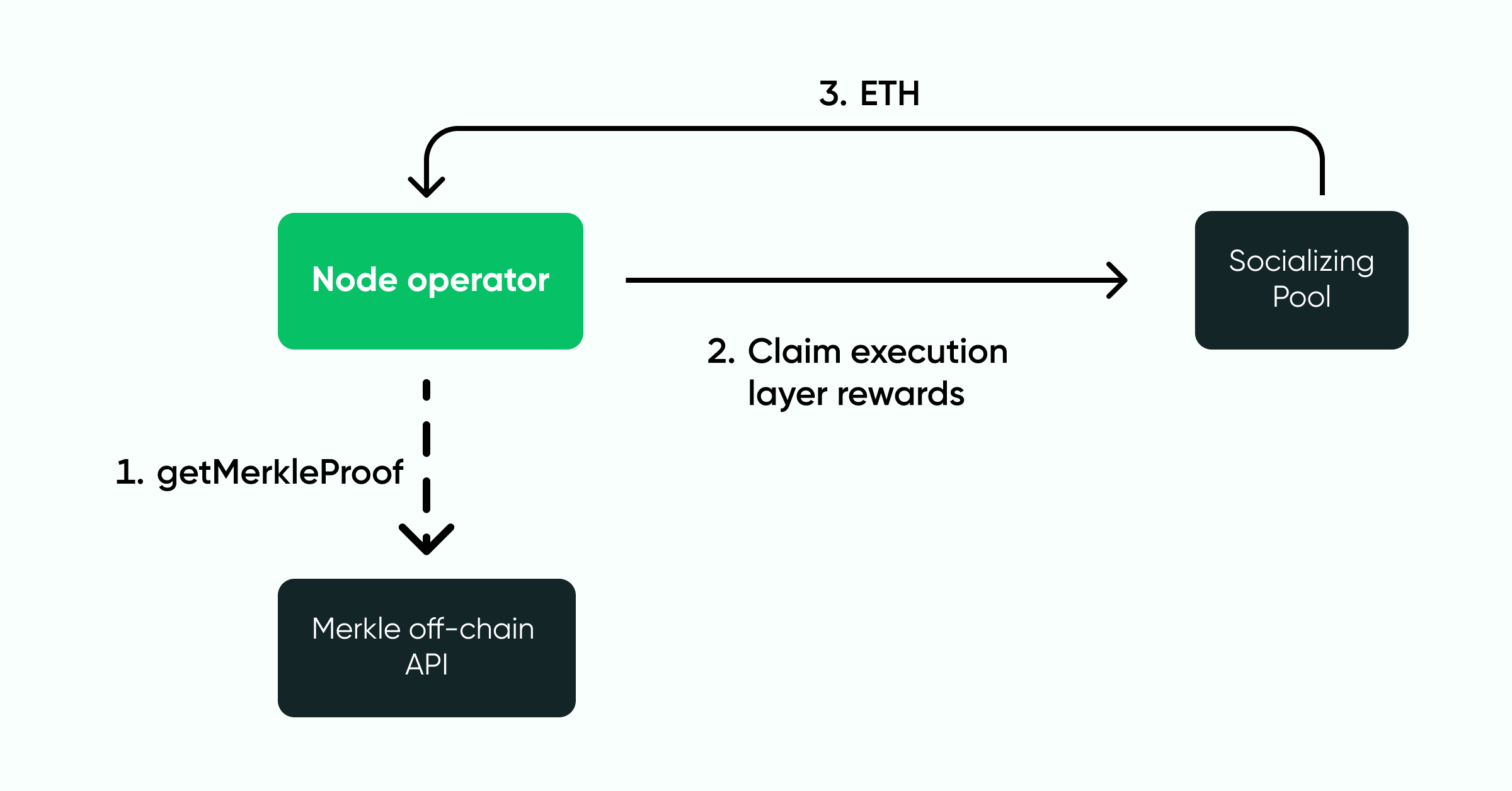
3.Claim Consensus Layer rewards.
An operator (or any entity) can settle rewards from any operator/validator-owned vaults in a permissionless manner. Node operators can claim the distributed rewards directly by interacting with the ‘OperatorRewardsCollector’ contract.
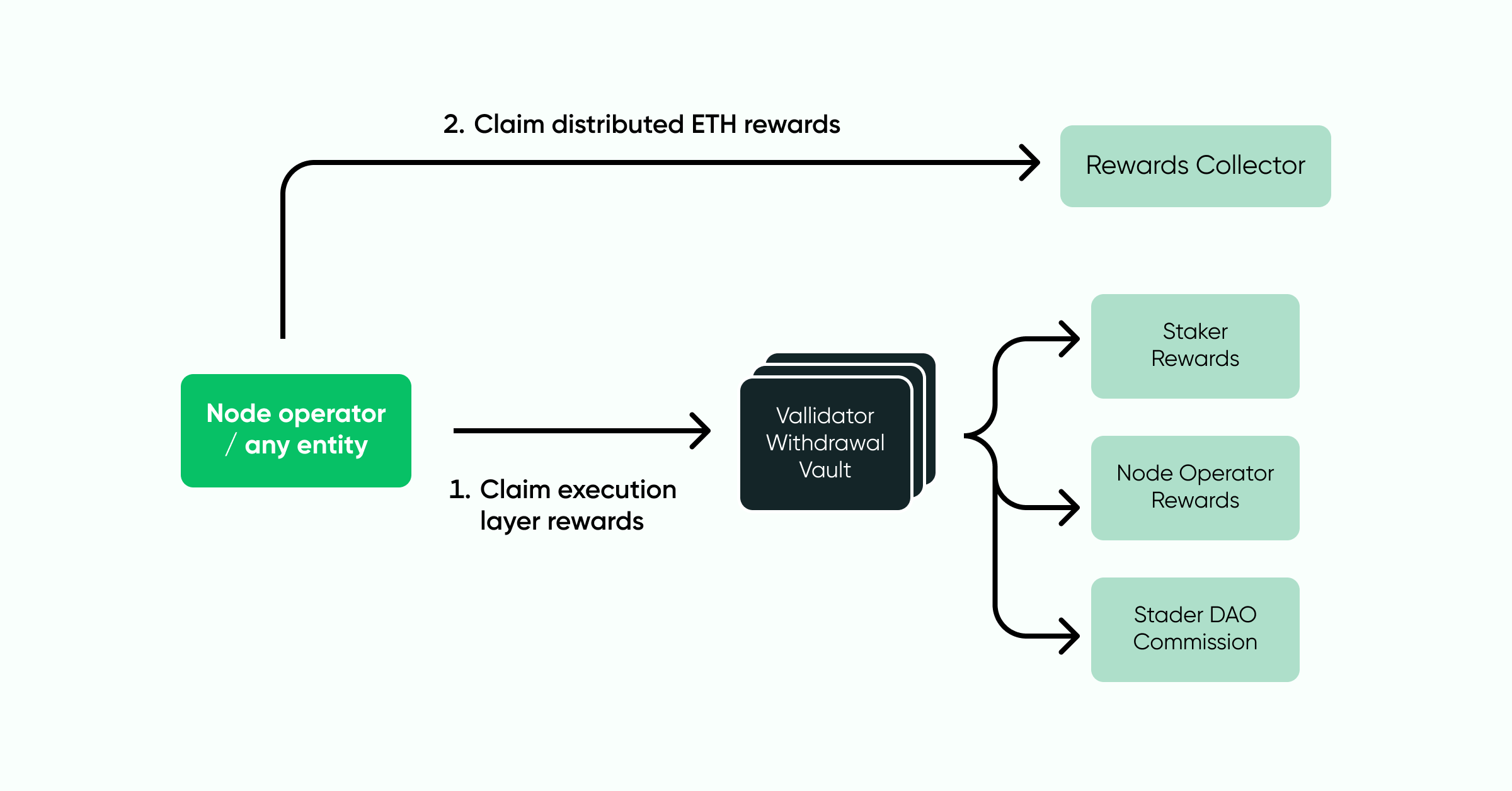
4.Claim SD Rewards
SD rewards for the node operators for providing the secondary security bond are available for claiming through the Merkle tree on socializing pool each reward cycle.
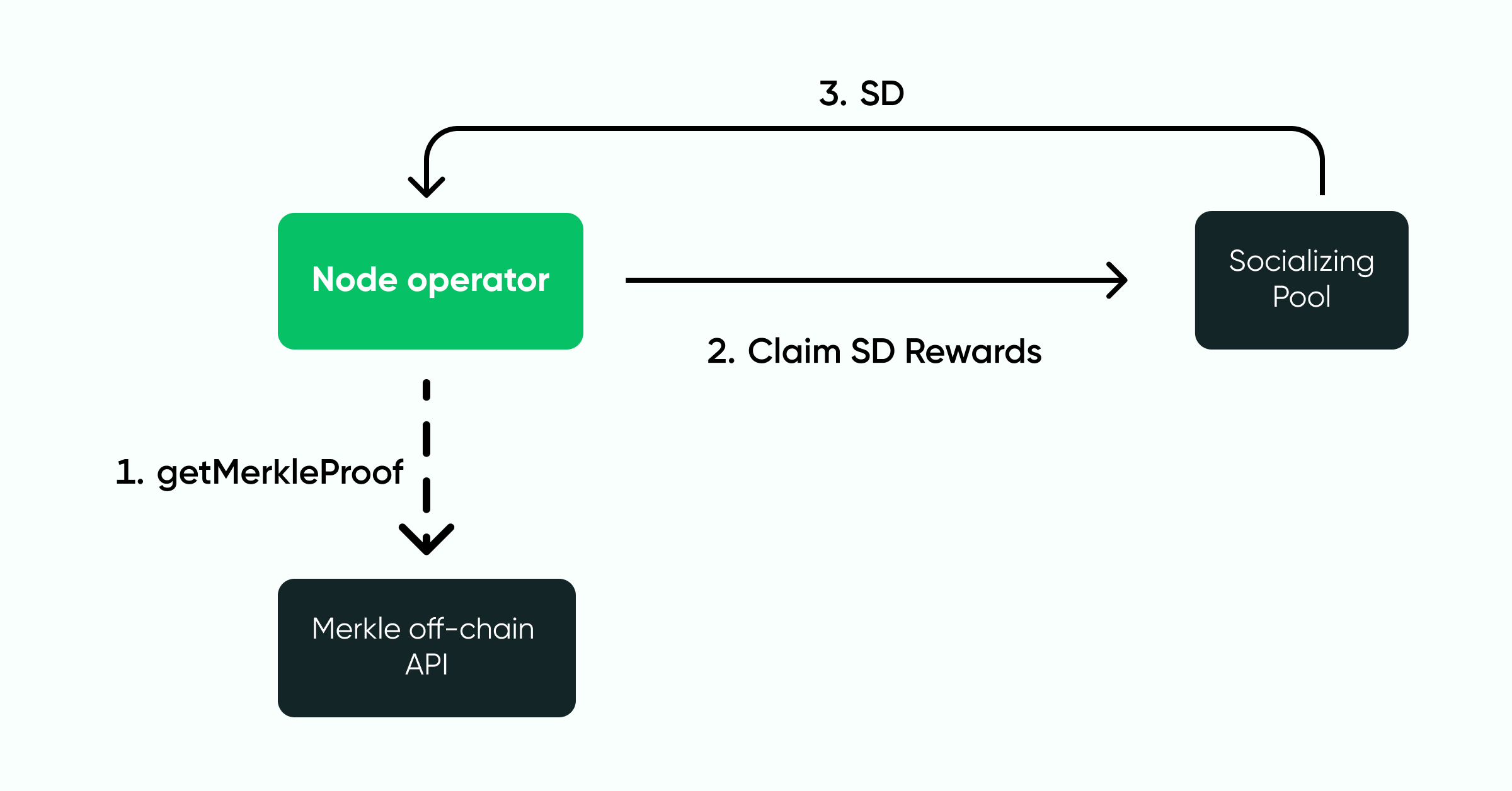
In this post, we’ve covered how ETH and SD rewards work with ETHx contracts. We walked through distributing rewards between node operators, stakers, and stader DAO treasury. We covered how Stader makes it easy for Node Operators to claim rewards with simple CLI commands. In subsequent posts, we will cover the other ETHx token withdrawals, oracles, and security portions.
For any questions you may have, please reach out to us at Discord.
Join 11,000+ ETHx early birds now! Get launch alpha and early access to $1M in SD rewards. Click here